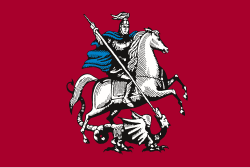- Flag of Almaty, Kazakhstan
- Flag of Athens, Greece (added placeholder image due to copyright issues)
- Flag of Babrujsk, Belarus
- Flag of Barnaul, Russia
- Flag of Birmingham, England, United Kingdom
- Flag of Bratislava, Slovakia
- Flag of Brest, Belarus
- Flag of Brno, Czech Republic
- Flag of Bucharest, Romania
- Flag of Cardiff, Wales, United Kingdom
- Flag of Chelyabinsk, Russia
- Flag of Cologne, Germany
- Flag of Dublin, Ireland
- Flag of Düsseldorf, Germany
- Flag of Edinburgh, Scotland
- Flag of Frankfurt, Germany
- Flag of Glasgow, Scotland
- Flag of Homieĺ, Belarus
- Flag of Hrodna, Belarus
- Flag of Istanbul, Turkey
- Flag of Kazan, Russia
- Flag of Kharkiv, Ukraine
- Flag of Kraków, Poland
- Flag of Krasnodar, Russia
- Flag of Krasnoyarsk, Russia
- Flag of Mahilioŭ, Belarus
- Flag of Minsk, Belarus
- Flag of Munich, Germany
- Flag of Nizhny Novgorod, Russia
- Flag of Novi Sad, Serbia
- Flag of Novosibirsk, Russia
- Flag of Perm, Russia
- Flag of Prague, Czech Republic
- Flag of Rome, Italy
- Flag of Rostov-on-Don, Russia
- Flag of Saint Petersburg, Russia
- Flag of Samara, Russia
- Flag of Saratov, Russia
- Flag of Sofia, Bulgaria
- Flag of Stuttgart, Germany
- Flag of Trieste, Italy
- Flag of Tyumen, Russia
- Flag of Ufa, Russia
- Flag of Vienna, Austria
- Flag of Vitebsk, Belarus
- Flag of Volgograd, Russia
- Flag of Voronezh, Russia
- Flag of Yekaterinburg, Russia
This article needs additional citations for verification .(March 2025) |

This is a list of international, national and subnational flags used in Europe.
Contents
- Supranational and international flags
- Flags of European sovereign states
- Flags of other European sovereign entities
- Disputed or partially recognised states
- Flags of European dependencies
- Flags of European sub-divisions
- Andorra
- Austria
- Belarus
- Belgium
- Bosnia and Herzegovina
- Denmark
- Finland
- France
- Georgia
- Germany
- Greece
- Ireland
- Italy
- Malta
- Netherlands
- Poland
- Portugal
- Russia
- Serbia
- Spain
- Sweden
- Switzerland
- Ukraine
- United Kingdom
- Flags of European cities
- Flags of European ethnic groups
- Historical flags
- Historical supranational and international flags
- Notes
- See also
- References
- External links












































































































































































































































































































































































































































































































